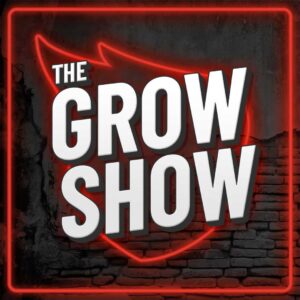In today’s hyper-competitive marketplace, generating quality leads efficiently is the cornerstone of sustainable business growth. Yet, many companies struggle to understand and control their lead generation costs, often pouring budgets into campaigns without a clear strategy or measurable outcomes. This article breaks down the complexities of lead generation cost, providing actionable strategies to optimize your budget while maximizing ROI.
Contents
What Goes Into the Cost of Lead Generation?
Lead generation cost refers to the total expenditure incurred to acquire a potential customer’s contact information or interest. This metric is critical because it directly impacts your customer acquisition cost (CAC) and overall profitability. Understanding what factors contribute to lead generation costs is the first step toward effective budget management.
Direct and Indirect Costs
Direct costs include expenses explicitly tied to lead generation activities, such as paid advertising, content creation, marketing automation tools, and third-party lead databases. Indirect costs, on the other hand, encompass overheads like marketing personnel’s salaries, software subscriptions, and even time spent on strategy and analysis.
For example, a company running a Google Ads campaign might spend $10,000 monthly on clicks and impressions (direct cost), but the salaries of the marketing team managing the campaign and the cost of analytics software also contribute to the true cost of generating each lead. Additionally, factors such as staff training on new marketing technologies or tools can add to the indirect costs, making it essential for businesses to have a comprehensive understanding of their expenditures.
Cost Per Lead (CPL) and Its Importance
Cost Per Lead (CPL) is the most common metric used to evaluate lead generation efficiency. It is calculated by dividing the total lead generation spend by the number of leads acquired. For instance, if you spend $5,000 and generate 250 leads, your CPL is $20.
While a low CPL might seem ideal, it’s essential to balance cost with lead quality. A $10 lead that never converts is less valuable than a $50 lead that becomes a loyal customer. Therefore, CPL should always be considered alongside conversion rates and customer lifetime value (CLV). Furthermore, analyzing the sources of your leads can provide insights into which channels yield the highest quality prospects, allowing for more strategic allocation of resources. For instance, leads generated through organic search may have a higher conversion rate than those from social media ads, indicating a need to optimize content for SEO to enhance lead quality. BrightEdge reports that organic search drives 53% of trackable website traffic, underscoring its role in lead quality and volume.

Factors Influencing Lead Generation Cost
Several variables affect how much you pay to acquire leads. Recognizing these factors helps marketers tailor their strategies and avoid budget overruns.
Industry and Market Competition
Highly competitive industries such as finance, insurance, and real estate often experience higher CPLs due to intense bidding wars for keywords and ad placements. For example, financial services companies can face CPLs exceeding $100 per lead on platforms like LinkedIn and Google Ads, reflecting the high value of each potential customer. Paid CPCs in competitive industries often run 2–4x the cross-industry average. (Source: WordStream PPC Benchmarks).
Conversely, niche markets with less competition typically enjoy lower CPLs, but the volume of leads might be limited. Understanding your industry’s competitive landscape is crucial for setting realistic budget expectations. Additionally, seasonal fluctuations can impact competition; for instance, during tax season, financial services may see a spike in competition, driving costs even higher. Marketers must remain agile, adjusting their strategies to account for these shifts, ensuring they remain competitive without overspending.
Lead Quality and Targeting Precision
Precision targeting—using demographic, behavioral, and psychographic data—can significantly reduce wasted spending on unqualified leads. However, more granular targeting often comes at a premium, increasing CPL but improving lead quality.
For example, B2B companies targeting C-level executives in Fortune 500 firms may pay more per lead but benefit from higher conversion rates and deal sizes. Balancing targeting precision with budget constraints is a key strategic decision. Furthermore, the use of advanced analytics and machine learning tools can enhance targeting strategies, allowing marketers to predict which leads are more likely to convert based on historical data. This not only helps in optimizing spend but also in crafting personalized marketing messages that resonate with specific audience segments, ultimately leading to better engagement and higher quality leads.
Channel Selection and Campaign Type
Different marketing channels have varying cost structures and effectiveness. Paid search ads, social media advertising, content marketing, email campaigns, and events each have unique cost profiles and lead quality outcomes.
Paid channels like Google Ads and LinkedIn often yield faster results but at higher costs, while inbound strategies like SEO and content marketing require upfront investment and time but can deliver lower CPLs over the long term. Moreover, the effectiveness of each channel can vary based on the target audience; for instance, younger demographics may respond better to social media campaigns, while older audiences might prefer email or direct outreach. Understanding where your audience spends their time is essential for optimizing lead generation efforts. Additionally, the integration of multi-channel strategies can further enhance lead generation, allowing marketers to reinforce their messages across platforms and increase overall visibility, which can lead to a more robust pipeline of potential leads.
Strategies to Optimize Lead Generation Cost
Optimizing lead generation cost is not about cutting budgets indiscriminately but about investing smarter. The following strategies focus on maximizing the impact of every dollar spent.
Leverage Data-Driven Decision Making
Data is the backbone of cost optimization. Tracking every campaign’s performance through analytics platforms such as Google Analytics, HubSpot, or Salesforce enables marketers to identify which channels and tactics yield the best CPL and conversion rates.
Regularly analyzing data helps in reallocating budgets from underperforming campaigns to high-performing ones, ensuring continuous improvement and cost efficiency. Additionally, utilizing predictive analytics can provide insights into future trends, allowing marketers to anticipate shifts in consumer behavior and adjust their strategies proactively. This forward-thinking approach not only enhances budget allocation but also positions businesses to capitalize on emerging opportunities in the market. 65% of marketers say proving ROI is a top challenge—tight tracking closes that gap. (Source: HubSpot State of Marketing).
Implement Lead Scoring and Qualification
Not all leads are created equal. Implementing a lead scoring system based on engagement, firmographics, and behavior allows sales teams to prioritize high-potential leads, reducing time wasted on low-quality prospects.
This approach improves conversion rates and justifies higher CPLs for premium leads, ultimately lowering overall customer acquisition costs. Companies that excel at lead nurturing generate 50% more sales-ready leads at 33% lower cost, showcasing the compounding benefit of qualification and nurture. (Source: Forrester Research).
Optimize Landing Pages and Conversion Funnels
Even the best traffic sources can underperform if the landing pages and conversion funnels are not optimized. A/B testing headlines, calls-to-action, and form fields can significantly increase conversion rates, reducing the cost per lead.
For instance, simplifying a lead capture form from five fields to three can boost conversions by up to 120%, directly lowering CPL without increasing ad spend. (Source: Unbounce). Additionally, typical landing page conversion rates hover around 2.35% on average, while the top quartile reaches 5.31%—a reminder that systematic testing can more than double outcomes. (Source: WordStream).
Additionally, incorporating elements such as social proof, testimonials, and trust badges can further enhance credibility and encourage conversions. By creating a seamless user experience that resonates with potential leads, businesses can maximize the effectiveness of their landing pages and ensure that every visitor has a higher likelihood of becoming a qualified lead.
Use Retargeting to Nurture Leads
Retargeting campaigns focus on visitors who have already expressed interest but did not convert initially. These campaigns typically have lower CPLs because the audience is warmer and more likely to engage.
Combining retargeting with personalized messaging and offers can dramatically improve lead conversion rates and reduce wasted budget on cold audiences. Website visitors who are retargeted are 43% more likely to convert, making retargeting a reliable lever for CPL reduction. (Source: Criteo).
Moreover, utilizing dynamic retargeting, which shows tailored ads based on the specific products or services viewed by the user, can significantly enhance engagement levels. This personalized approach not only keeps your brand top-of-mind but also fosters a sense of relevance and urgency, encouraging potential leads to take the final step towards conversion.
Experiment with Content Marketing and SEO
While paid campaigns provide immediate results, content marketing and SEO build sustainable lead pipelines with lower long-term costs. Creating high-quality, relevant content attracts organic traffic and nurtures leads through educational materials, case studies, and thought leadership.
Investing in SEO ensures your content ranks well on search engines, driving consistent, cost-effective inbound leads over time. Although it requires patience, the ROI can far exceed paid channels in the long run. Organic search delivers more than half of trackable site traffic and a substantial share of revenue for many industries.
Additionally, incorporating a multi-channel approach by promoting content through social media, email newsletters, and partnerships can amplify reach and engagement. By diversifying content distribution, businesses can tap into different audience segments, further enhancing their lead generation efforts and establishing a robust online presence that continually attracts new prospects.
Measuring and Reporting Lead Generation ROI
Understanding and optimizing lead generation cost requires robust measurement and transparent reporting. Without accurate data, even the best strategies can fail. This is particularly critical in today’s competitive landscape, where every marketing dollar counts, and businesses must ensure they are investing wisely. By leveraging advanced analytics and data visualization tools, organizations can gain deeper insights into their lead generation efforts, allowing for more informed decision-making and strategic adjustments.
Key Metrics Beyond CPL
While CPL is important, it should be analyzed alongside other metrics such as:
- Conversion Rate: Percentage of leads that become paying customers.
- Customer Acquisition Cost (CAC): Total cost to acquire a customer, including post-lead generation expenses.
- Customer Lifetime Value (CLV): Revenue expected from a customer over their entire relationship with your company.
- Lead Velocity Rate (LVR): The growth rate of qualified leads month-over-month.
These metrics provide a holistic view of your lead generation effectiveness and help justify budget allocations. Additionally, tracking metrics like the average sales cycle length can reveal how quickly leads are converting, while examining the source of leads can identify which channels yield the highest quality prospects. By understanding these nuances, businesses can refine their marketing strategies, focusing efforts on the most productive avenues and ultimately driving greater ROI.
Attribution Models and Multi-Touch Tracking
Modern buyers interact with multiple touchpoints before converting. Attribution models such as first-touch, last-touch, and multi-touch help marketers understand which channels contribute most to lead generation and conversion. Each model offers unique insights; for instance, first-touch attribution highlights the initial point of contact, while last-touch emphasizes the final interaction before conversion. However, multi-touch attribution provides a more comprehensive understanding, capturing the entire customer journey and the cumulative impact of various touchpoints.
Multi-touch attribution, in particular, provides a nuanced view of the customer journey, enabling more precise budget optimization across channels. By analyzing the effectiveness of each touchpoint, marketers can allocate resources more effectively, ensuring that high-performing channels receive the necessary investment to maximize lead generation efforts. Furthermore, integrating customer feedback and behavioral data into these models can enhance their accuracy, allowing for a more tailored approach to lead nurturing and engagement strategies.
Case Studies: Real-World Examples of Cost Optimization
Technology Startup Reduces CPL by 40% Through Targeted LinkedIn Ads
A SaaS company specializing in cybersecurity solutions initially faced a CPL of $75 on LinkedIn. By refining their audience targeting to focus on IT managers in mid-sized enterprises and testing multiple ad creatives, they reduced CPL to $45 within three months.
Additionally, integrating a lead scoring system helped prioritize high-quality leads, increasing conversion rates by 25%. This dual approach saved the company over $30,000 annually while growing its qualified lead pipeline. The company also implemented A/B testing for its landing pages, which further optimized its conversion funnel. By analyzing user behavior and adjusting call-to-action placements, it enhanced user experience, leading to a significant drop in bounce rates and an increase in engagement metrics.
Financial Services Firm Boosts Lead Quality with Content Marketing
A financial advisory firm struggled with expensive paid campaigns averaging $120 CPL. Shifting focus to content marketing, including webinars, whitepapers, and blog posts, they attracted organic leads with a CPL under $40.
Though slower to ramp up, the inbound leads had a 50% higher conversion rate, and the firm’s overall CAC decreased by 30%. This demonstrated the power of combining inbound and outbound strategies for sustainable growth. The firm also leveraged social media platforms to promote their content, creating an engaged community that shared insights and experiences. By fostering a dialogue with their audience, they not only increased brand awareness but also positioned themselves as thought leaders in the financial sector, further enhancing their credibility and trustworthiness among potential clients.
Wrapping Up
Lead generation cost is a dynamic metric influenced by industry factors, targeting precision, channel choice, and campaign execution. Businesses that understand these nuances and implement data-driven strategies can optimize their budgets, improve lead quality, and accelerate growth.
By embracing continuous measurement, refining targeting, optimizing conversion funnels, and balancing paid and organic efforts, marketers can transform lead generation from a costly expense into a powerful revenue generator.
Ultimately, the goal is not just to reduce cost but to maximize the value of every lead, ensuring that marketing investments deliver measurable, scalable results.
Ready to Optimize Your Lead Generation Strategy?
At Abstrakt, we specialize in elevating B2B lead generation to new heights. Our dedicated team is committed to helping your business thrive by delivering high-quality leads that fuel growth and surpass your goals. If you’re looking to refine your lead generation process and achieve remarkable results, learn how we can tailor our expertise to your unique needs and drive your success forward.

Madison Hendrix
Madison has worked in SEO and content writing at Abstrakt for over 5 years and has become a certified lead generation expert through her hours upon hours of research to identify the best possible strategies for companies to grow within our niche industry target audiences. An early adopter of AIO (A.I. Optimization) with many organic search accolades - she brings a unique level of expertise to Abstrakt providing helpful info to all of our core audiences.
- Madison Hendrix
- Madison Hendrix
- Madison Hendrix
- Madison Hendrix





